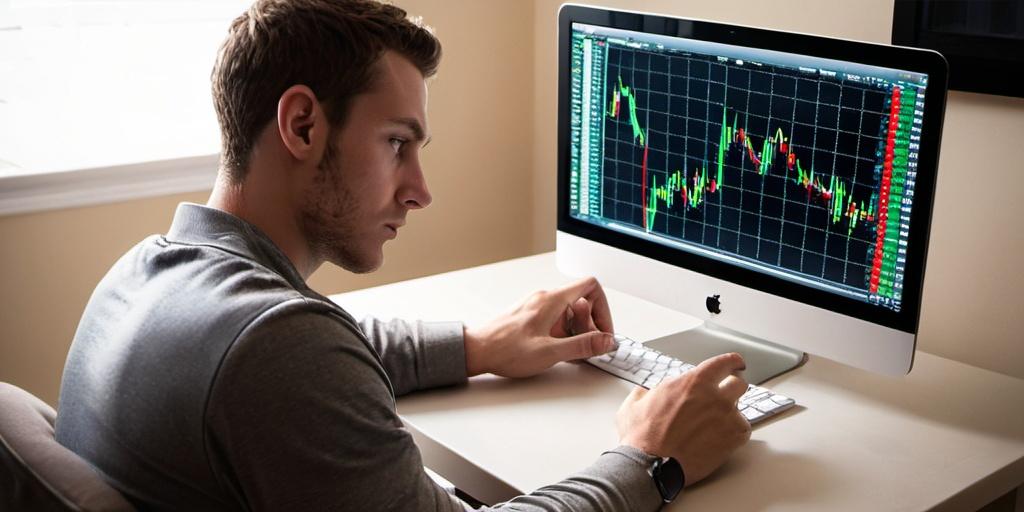A binary options demo account is your practice field. No risk, no real money, just trades based on real market conditions. It’s where beginners figure out what not to do, and where experienced traders test new setups without getting financially wrecked. You wouldn’t fly a plane without a simulator first—same logic applies here.
Yet, too many traders either skip the demo or treat it like a toy. They take 20 trades a minute, bet fake money like it’s Monopoly cash, and then jump into a live account thinking they’ve got the magic formula. A demo isn’t just a free trial—it’s where discipline, accuracy, and timing are built. If you don’t use it properly, the market will remind you why it matters.

What a Binary Options Demo Account Actually Does
A demo account gives you access to a broker’s trading platform with virtual funds, letting you simulate real trades under real (or nearly real) market conditions. You can pick assets, choose expiry times, analyze charts, and place trades just like you would with a live account. The difference? You lose nothing when you’re wrong, and you gain zero when you’re right.
It’s not about winning—it’s about understanding the mechanics:
- How does the platform handle expiry?
- How quickly are trades executed?
- How do price quotes move during volatile periods?
- What indicators or tools are built into the charts?
- Does the platform freeze, delay, or glitch mid-trade?
All of this matters, and the only place to find out without getting burned is in demo.
Why You Should Use a Demo Account
Too many traders want to skip the learning curve and go straight to live. The logic is always the same: “I’ll just start small and learn as I go.” But binary options don’t give you time to learn mid-trade. There’s no margin for hesitation. You need to know what happens when you click—before it costs you.
Here’s what a demo account helps you fix early:
- Timing mistakes: Entering trades too early or late
- Expiry mismatches: Choosing the wrong time frame for your setup
- Platform errors: Misclicking trade size, expiry, or direction
- Strategy blind spots: Realizing your logic fails during news events or low volume hours
- Overtrading: Discovering you’re not as patient as you thought
Demo accounts are where you get to make all the dumb mistakes for free. Skip that, and the same mistakes cost real money.
What to Look for in a Demo Account
Not all demo accounts are equal. Some brokers limit access, delay market data, or restrict the number of trades you can place. Others force you to deposit before they let you access the demo—huge red flag.
A proper demo account should offer:
- Unlimited access: No time limits, no expiry
- Real-time market data: Live charts and asset pricing
- Full platform features: All tools and expiry options available
- Reasonable virtual balance: Not $100,000 if you’ll only be depositing $100 later
- No forced broker signup: You shouldn’t have to deposit to test
Demo accounts should feel identical to the live environment. If anything is “locked” behind real money, that broker doesn’t trust their own product—and neither should you.
Transitioning From Demo to Real Trading
The hardest shift isn’t technical—it’s emotional. You can win for weeks in demo, but once real money’s involved, everything changes. Fear creeps in. You second guess. You overcompensate. That’s where most demo-success stories fall apart.
To make the transition smoother:
- Trade with realistic amounts: If you plan to start live with $250, don’t run your demo with $10,000
- Treat demo money like it’s real: Don’t spam trades just because it’s fake
- Stick to your strategy: If you wouldn’t risk $100 live, don’t do it in demo
- Track every trade: Build the habit of keeping a log—entry, expiry, result, reason
- Use the same session hours: If you’ll trade after work in real life, practice at that time in demo too
Demo accounts are training—not magic mirrors. Just because you’re profitable with play money doesn’t guarantee live results. But if you’re losing in demo, there’s no need to go live at all.
Brokers That Offer Free Demo Accounts
Many binary options brokers offer demo access, but the quality varies. Some brokers require registration; others offer one-click access without even needing an email. A few limit demo time to 7 or 14 days.
If you’re hunting for a place to practice, the list of trusted brokers includes platforms known to offer reliable, full-featured demo accounts.
When testing, look for:
- Chart responsiveness
- Trade placement accuracy
- Payout clarity
- Indicator availability
- Expiry flexibility
Remember, the goal is to make your practice time as close to real trading as possible. The platform shouldn’t hold you back.
Final Word
Binary options demo accounts are your testing ground—not your playground. Use them seriously, and they’ll save you from a world of expensive mistakes. Ignore them, and you’ll learn the hard way—live, with real cash, under real pressure.
Use the demo to fine-tune your strategy, test the broker, and sharpen your execution. But when you finally go live, remember: the money’s real, but the rules don’t change. The platform behaves the same. The expiry clock still ticks. And only the traders who prepared properly have any shot at lasting.
If you’re still deciding where to open a demo or want to compare platform features, head over to our binary options brokers page for a breakdown of available accounts, tools, and platforms that don’t waste your time.
